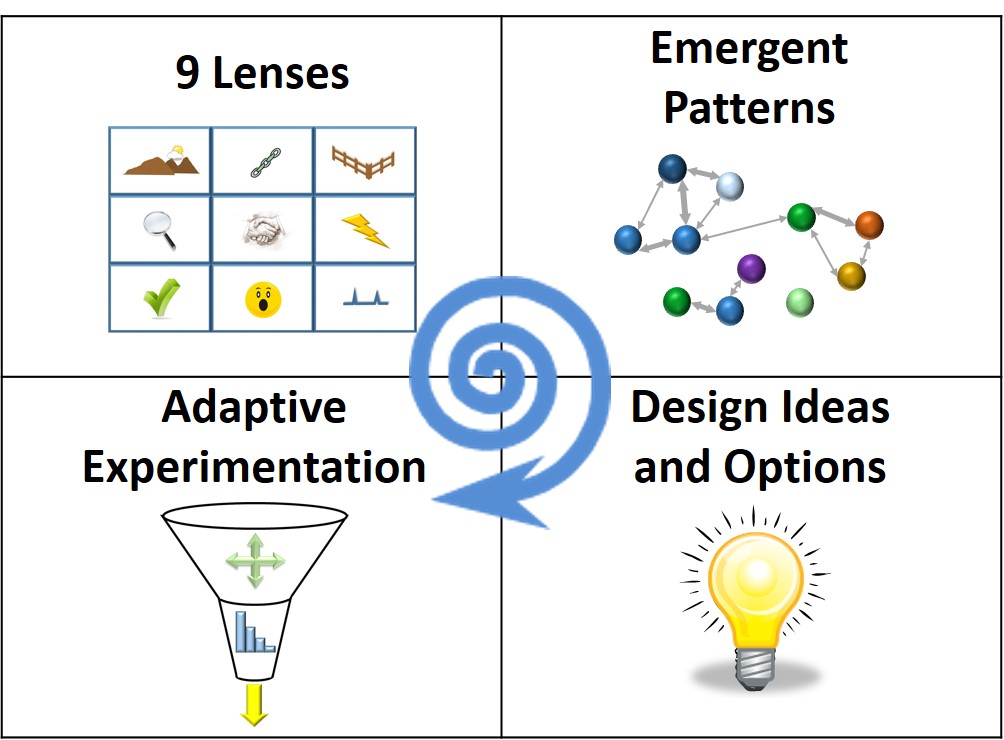Learning and action co-evolve to create success

The four elements of the Adaptive Toolkit – 9 Lenses, Emergent Patterns, Design Ideas and Options, and Adaptive Experimentation – are most powerful when used iteratively to solve a complex problem or to realize a complex opportunity. Adaptive Iteration involves three distinct phases – exploratory, assessment and monitoring.
The exploratory phase involves the widest range of design choices and will often involve clarification of the nature and scope of the problem or opportunity being addressed. The output of the exploratory phase is set of foundational design choices – objective, boundaries/constraints, architecture/game plan and (often) the design metaphor. The iterations during the design phase should be as low cost and as rapid as possible in order to rapidly scan the problem and solution space. The iterations will often be performed by a single team with specialist input and advice. The activities during exploratory phase may appear to be somewhat chaotic.
Detailed design choices are identified and evaluated during the assessment phase. The decisions at this stage are less about structure and architecture and more about detail of the elements of the design and how the design will perform in context. During the assessment phase the iterations grow to be of longer duration and more costly. The activities become specialized and communication and coordination among the specialists becomes critical. The assessment phase may generate learning and insights that challenge some of the foundational design choices made during the exploratory phase. If this happens, the exploratory phase needs to be revisited to incorporate the learning and insights.
During the monitoring phase the implementation of the design is monitored to generate further learning about how the design really works in context. This provides the most direct evidence of the validity of the underlying assumptions and of the suitability of the various design choices. It also enables the identification of any unanticipated or unintended responses and consequences. Adaptive iterations continue throughout the monitoring phase but must be more carefully planned and implemented to minimise any disruption or confusion of users and stakeholders.
In summary, an iterative approach has several significant benefits:
- It allows rapid and low cost testing of underlying assumptions
- It allows rapid scanning of the nature and scope of the problem or opportunity
- It allows rapid scanning of a wide range of solution design options
- It develops shared and coherent perspectives across the project team and related stakeholders
- It generates continuous collective learning and enables that learning to be rapidly incorporated into future iterations of the solution design
- It supports early identification of the any unanticipated or unintended consequences.





Follow Us!